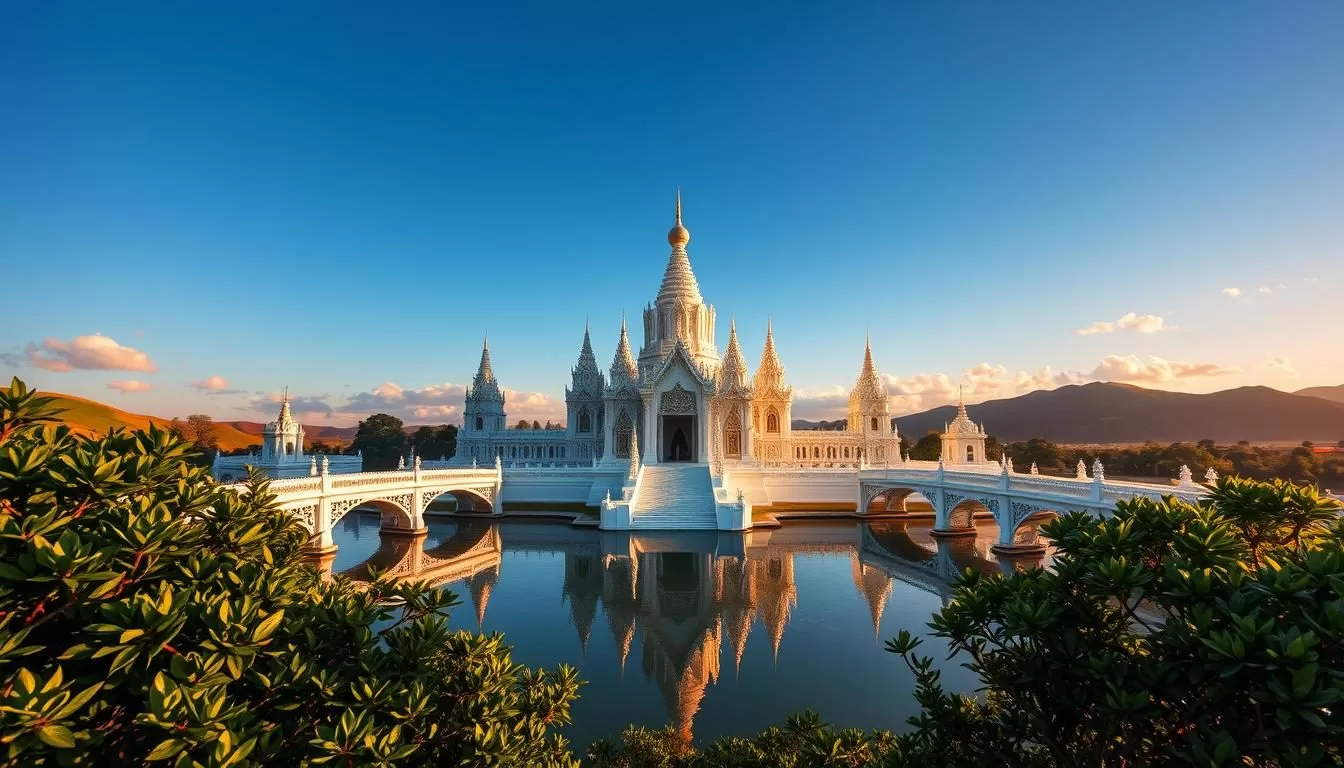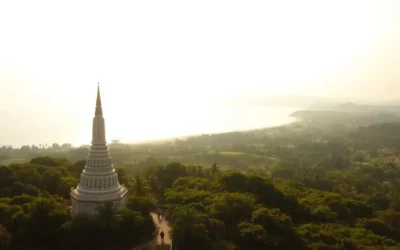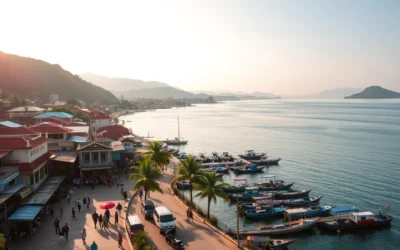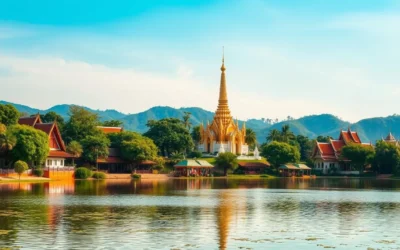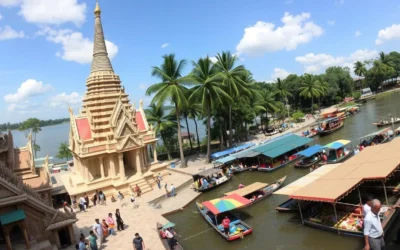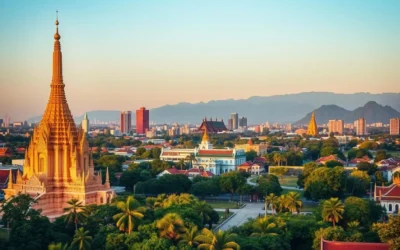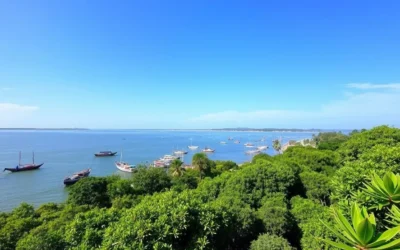Imagine a place where artistic temples and charming tea plantations blend together in perfect harmony. Chiang Rai, a northern Thai town, offers a unique blend of cultural experiences, natural wonders, and artistic attractions that make it a must-visit destination.
While many travelers visit as a day trip from Chiang Mai, the city deserves more time to fully appreciate its diverse attractions and laid-back atmosphere. For a more immersive experience, consider staying for at least 2 days and 1 night as part of a week-long trip itinerary in Northern Thailand.
This comprehensive guide will walk you through the top attractions and hidden gems, helping you make the most of your visit to this captivating place.
Discovering the Charm of Chiang Rai
As Thailand’s northernmost major city, Chiang Rai is a place where the borders of Thailand, Laos, and Myanmar meet, creating a distinct cultural identity. This unique location has given Chiang Rai a blend of influences from its neighboring countries, making it a fascinating destination for travelers.
Where is Chiang Rai Located?
Chiang Rai is situated in the Golden Triangle region, an area known for its significant historical and cultural importance. The city is about 3-4 hours away from Chiang Mai, another major cultural hub in northern Thailand, but it offers a distinctly different experience. While Chiang Mai is more commercialized, Chiang Rai provides a more authentic and less touristy atmosphere, making it an ideal place for those seeking a genuine cultural experience.
- Chiang Rai is nestled in a valley surrounded by mountains, offering breathtaking scenery.
- The city’s strategic location at the confluence of the Mekong River and other waterways has made it an important hub for trade and cultural exchange.
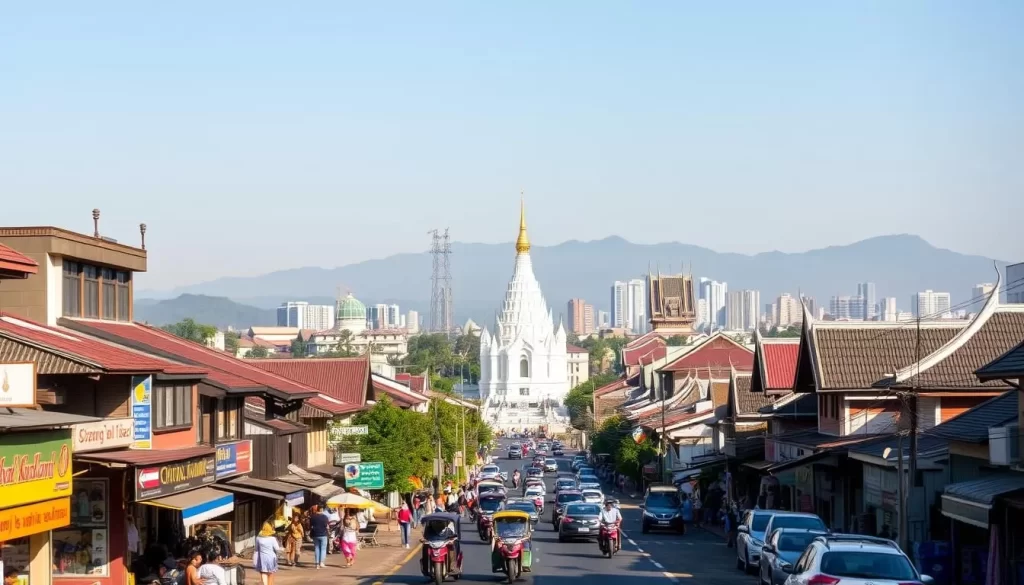
Best Time to Visit Chiang Rai
The best time to visit Chiang Rai is during the cool season, from November to February, when the weather is comfortable, with minimal rain and low humidity. During this period, the temperatures are cool, making it ideal for outdoor activities and sightseeing.
It’s essential to avoid the burning season, which typically occurs from February to April, as the air quality can deteriorate significantly due to agricultural burning in the region. The rainy season, from July to October, brings lush green landscapes but can disrupt outdoor plans with daily downpours.
Key considerations for planning your visit:
- The cool season (November to February) is the best time for comfortable sightseeing.
- Be prepared for higher prices and book accommodations in advance during peak season (December-January).
- Avoid the burning season (February to April) due to poor air quality.
How to Get to Chiang Rai
You have several options to reach Chiang Rai, depending on your starting location and budget. Chiang Rai is a significant cultural and tourist hub in northern Thailand, and getting there is relatively straightforward.
From Bangkok to Chiang Rai
If you’re traveling from Bangkok, you have two primary options: flying or taking the bus. Flying is the fastest way to reach Chiang Rai, with daily flights from Bangkok’s Don Mueang Airport (DMK) to Mae Fah Luang-Chiang Rai International Airport. The flight duration is just over an hour, making it a convenient option for those short on time.
For those on a tighter budget, taking the bus is a viable alternative. The bus journey from Bangkok to Chiang Rai takes around 13 hours, so it’s essential to be prepared for a long ride. However, it’s an economical way to travel and allows you to see the countryside along the way.
From Chiang Mai to Chiang Rai
Traveling from Chiang Mai to Chiang Rai is relatively easy, with buses being the most popular mode of transport. Buses depart from Chiang Mai’s Bus Terminal 3, with services running almost every hour from 7 AM to 6 PM. The journey takes about 4 hours, making it a feasible day trip or a quick transit to your next destination.
Alternatively, you can rent a car and drive to Chiang Rai. The scenic road trip through Northern Thailand’s mountainous landscapes takes approximately 3.5 hours, depending on your stops along the way. This option provides the flexibility to explore the region at your own pace.
International Access
For international travelers, Chiang Rai is accessible either by flying directly from select Asian hubs or by connecting through Bangkok’s airports. Mae Fah Luang-Chiang Rai International Airport receives flights from various regional destinations, making it relatively easy to reach Chiang Rai from abroad.
Many visitors also opt for organized day trips from Chiang Mai, which include transportation and guided tours of major attractions. This option is convenient for those who want to explore Chiang Rai’s highlights without worrying about logistics.
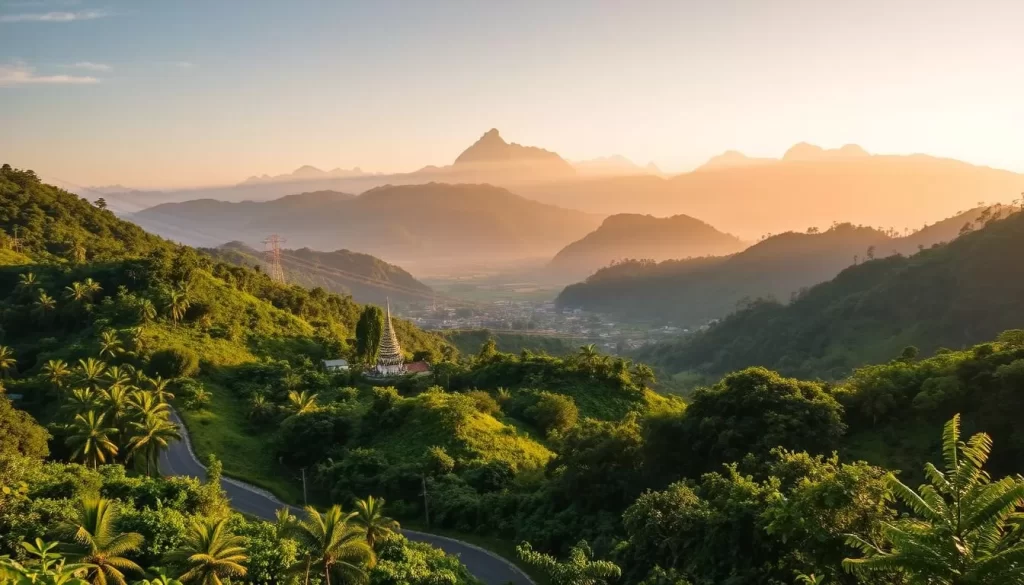
Whether you’re coming from within Thailand or from abroad, there’s a suitable way to travel to Chiang Rai that fits your budget and time constraints. With options ranging from flights to buses, and even car rentals for a scenic drive, you can choose the best way to travel based on your preferences.
Getting Around Chiang Rai
Chiang Rai is a city that beckons exploration, and understanding your transportation options is key to a fulfilling visit. The city offers various ways to get around, catering to different preferences and needs.
Renting a Motorbike
Renting a motorbike offers the greatest flexibility for exploring Chiang Rai and its surrounding attractions. Daily rates range from 150-300 THB, depending on the model and rental duration. For instance, renting a Honda Click costs around THB250/day from many accommodations in Chiang Rai.
When renting a motorbike, ensure you have a valid International Driving License, wear a helmet at all times, and confirm you’re adequately insured for your safety and legal compliance.
Public Transportation Options
For those uncomfortable with riding motorbikes, Grab is widely available in the city center, though service may be limited when venturing to more remote attractions outside the city. Traditional transportation options include tuk-tuks and songthaews (shared pickup trucks), which can be negotiated for half or full-day tours to popular sites around Chiang Rai.
Guided Tours
Guided tours provide a hassle-free option with the added benefit of knowledgeable guides who can share cultural and historical context about the attractions you visit. This is particularly useful for understanding the significance of the places you visit around Chiang Rai.
Whether you’re exploring the city or venturing out to its surroundings, there’s a transportation option in Chiang Rai to suit your needs.
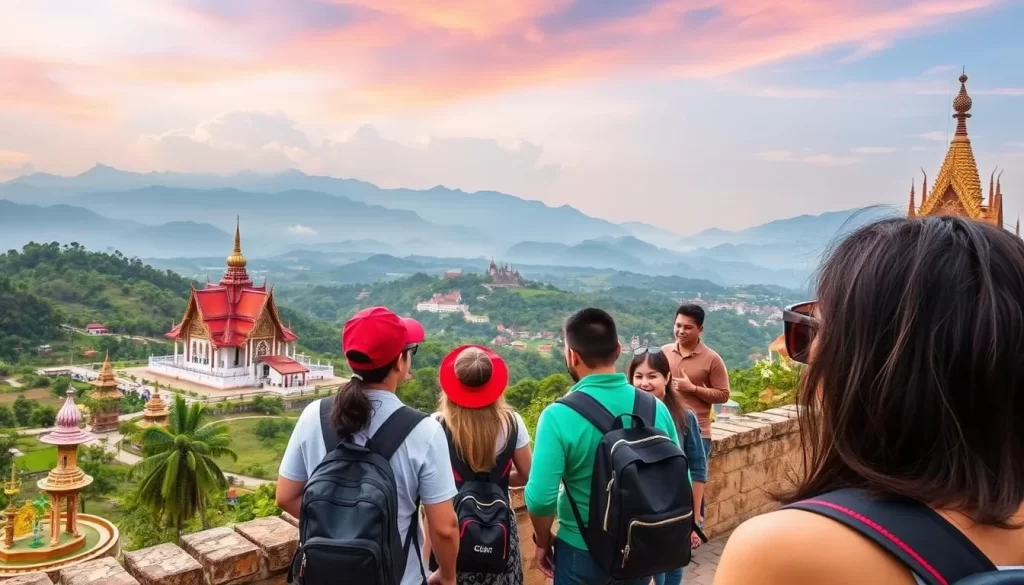
Wat Rong Khun: The Iconic White Temple
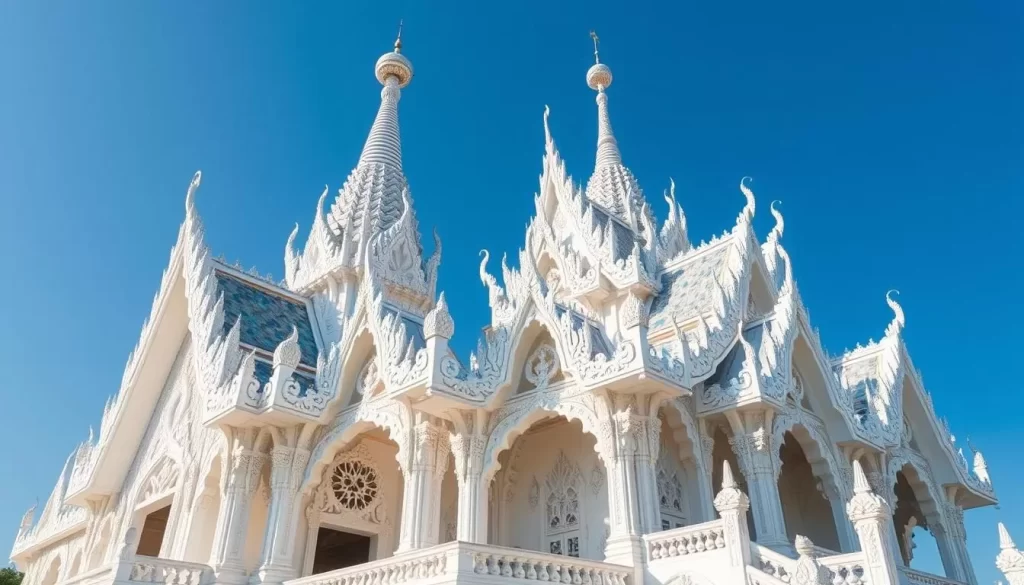
As you approach Wat Rong Khun, the dazzling white structure gleaming with mirrored glass fragments, you’ll understand why it’s considered Chiang Rai’s most iconic landmark. Better known as the White Temple, this contemporary Buddhist temple is the brainchild of renowned Thai artist Chalermchai Kositpipat.
History and Architecture
The site where Wat Rong Khun stands today was once an abandoned, ruinous temple. Chalermchai Kositpipat decided to rehabilitate the area and rebuild the temple in 1997. Although the main construction was completed in 2008, the artist continues to add new elements, with an initial plan to continue work until 2070.
The temple’s architecture is a unique blend of traditional Buddhist symbolism and modern art. The white exterior symbolizes the purity of Buddha, while the mirrored glass fragments create a heavenly appearance by sparkling in the sunlight.
Visitor Information and Tips
To make the most of your visit to Wat Rong Khun, arrive early in the morning or late in the afternoon to avoid crowds and capture stunning photographs. The temple is open from 8 AM to 5 PM, and there’s a small entrance fee of THB 100.
As you enter the temple complex, you’ll cross a bridge over a sea of reaching hands, representing desire and suffering, before entering the main sanctuary. Be sure to look out for the unexpected modern pop culture references within the murals.
What Makes It Special
Wat Rong Khun stands out not only for its beauty but also for its evolving nature. The continuous additions and the blend of religious and modern artistic elements make it a surreal and thought-provoking experience for visitors.
Wat Rong Suea Ten: The Mesmerizing Blue Temple
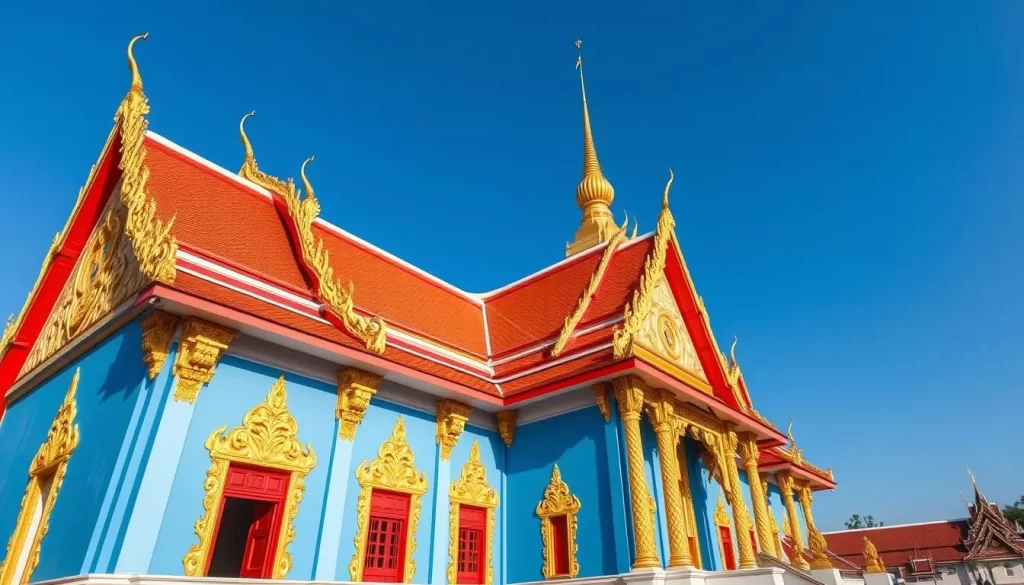
Wat Rong Suea Ten, or the Blue Temple, is a masterpiece of modern Thai architecture, designed by Putha Kabkaew, a student of Chalermchai Kositpipat, the renowned artist behind the White Temple. This contemporary temple is a relatively recent addition to Chiang Rai’s cultural landscape, yet it has quickly become a must-visit destination.
The Story Behind the Blue Temple
The name “Wat Rong Suea Ten” translates to “Temple of the Dancing Tiger,” a reference to the tigers that were said to roam the area before the temple was built on the site of an abandoned monastery. The construction of this temple began in 1996 but was initiated almost a decade later. Putha Kabkaew’s artistic vision brought this temple to life, reflecting a blend of traditional Thai culture and modern artistic expression.
What to See Inside
Upon entering the Blue Temple, visitors are greeted by a stunning 6-meter-tall white Buddha statue set against the brilliant blue walls, creating a peaceful yet visually stimulating atmosphere. The interior, adorned with golden accents, offers a striking contrast to the temple’s vibrant blue exterior. This contemporary artwork is not only a place of worship but also a showcase of Thailand’s rich cultural heritage and artistic innovation.
Practical Information for Visitors
Wat Rong Suea Ten is open from 7 AM to 8 PM, making it accessible for visitors throughout the day. Unlike many temples in Thailand, visiting the Blue Temple is free, making it an accessible cultural experience for all travelers. The temple’s relatively recent completion means it’s less crowded than some of Chiang Rai’s other attractions, offering a more serene experience, especially when visited early in the morning or later in the evening.
Baan Dam Museum: The Mysterious Black House
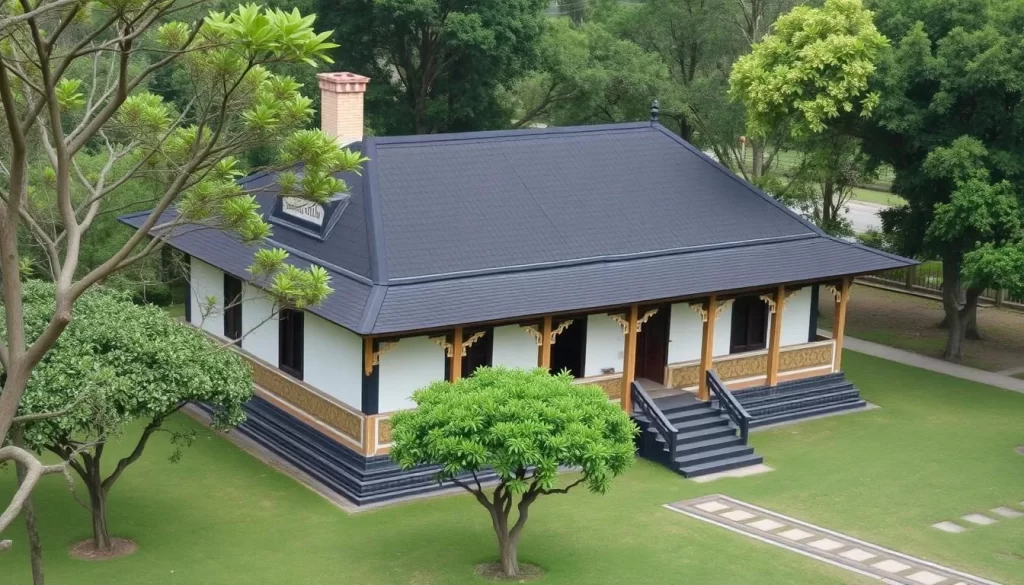
In the heart of Chiang Rai lies the Baan Dam Museum, a mysterious Black House that embodies the artistic genius and unconventional style of Thawan Duchanee. This unique cultural landmark is not a temple, as its exterior might suggest, but a house featuring an extraordinary collection of artworks by the late artist.
Thawan Duchanee’s Artistic Vision
Thawan Duchanee’s artistic vision was characterized by a blend of traditional Thai architecture and his own distinctive, unconventional style. The result is a series of black houses topped with pointy roofs, creating an otherworldly ambiance. The Main Sanctuary Hall is particularly striking, with its large, fearsome paintings, a bust of Thawan, and long tables draped with crocodile skins, showcasing the artist’s complex and thought-provoking philosophy.
The museum’s collection includes macabre elements such as animal skulls, skins, and bones, arranged in displays that explore Buddhist concepts of impermanence and suffering through a contemporary lens. This unique blend of traditional craftsmanship and modern artistic sensibilities creates an atmosphere that is both beautiful and unsettling.
Exploring the Museum Grounds
Visitors to the Baan Dam Museum can explore approximately 25 buildings on the grounds, each housing different installations that reflect Thawan’s artistic expression. The compound, which served as both Thawan’s residence and his artistic playground, features around 40 structures in total. The varied installations combine traditional Thai elements with modern and occasionally shocking imagery, providing a comprehensive insight into Thawan’s artistic world.
For a unique interactive experience, visitors can scan QR codes next to certain artworks to access Instagram filters that animate the paintings, bringing a digital dimension to this traditional art form.
Visitor Details
Baan Dam Museum is open every day from 9 AM to 5 PM, making it an accessible destination for tourists. Tickets are priced at THB 80. Planning your visit to coincide with the museum’s operating hours will ensure that you can fully appreciate the intricate details and artistic nuances of this fascinating site.
Wat Huay Pla Kang: Temple Complex on the Hill
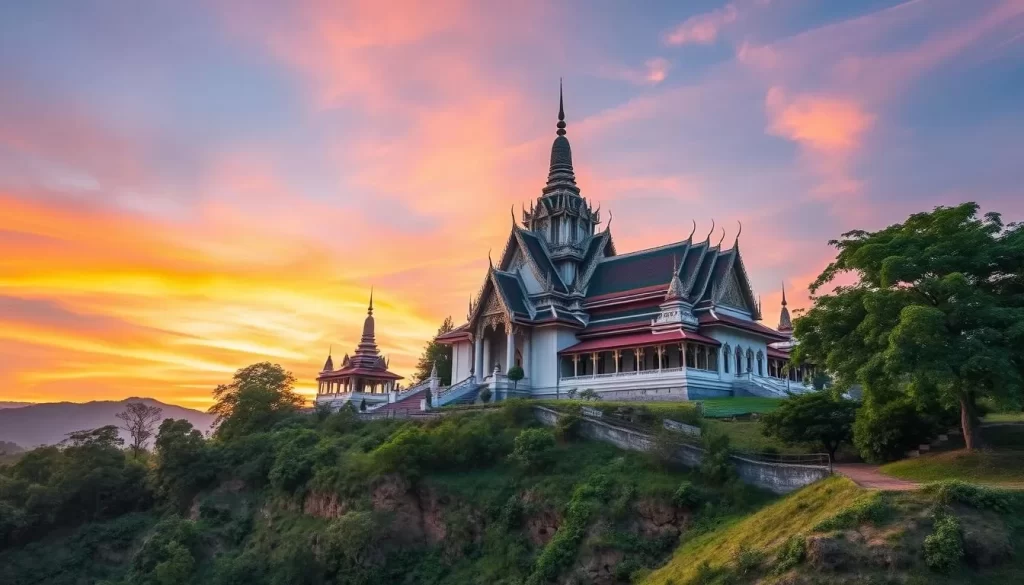
Perched atop a hill, Wat Huay Pla Kang is a must-visit destination in Chiang Rai, offering a unique blend of Thai Lanna and Chinese architectural styles. Established in 2001, this Buddhist monastery is a significant cultural landmark.
The Giant Guan Yin Statue
The temple complex is home to a giant white Guan Yin statue, one of the largest in Thailand. You can take a ticketed lift to the 25th floor for THB 40, offering panoramic views of Chiang Rai. The statue is an embodiment of compassion and mercy, attracting visitors from all over the world.
The Nine-Story Pagoda
Another highlight of Wat Huay Pla Kang is its vibrantly colored nine-story pagoda. The pagoda is adorned with Chinese-style dragons and houses Buddha images and Chinese deities on its various levels. As you climb to the top, you’ll discover the rich cultural tapestry that this temple complex represents.
Best Time for Visiting
The best time to visit Wat Huay Pla Kang is during sunset, when the golden light illuminates the white structures, making it a photographer’s paradise. The temple complex is open from 7 AM to 9 PM, although the lift to the Guan Yin statue closes earlier. Plan your visit accordingly to make the most of your time at this beautiful place.
Wat Huay Pla Kang is a serene temple on the hill, offering a peaceful escape from the city’s hustle and bustle. Its unique blend of architectural styles and stunning views make it a must-visit complex in Chiang Rai. Be sure to check the hours of operation to plan your day effectively.
Natural Wonders Around Chiang Rai
Beyond its cultural landmarks, Chiang Rai boasts an array of natural attractions that are sure to captivate any traveler. The region is home to stunning waterfalls and rejuvenating hot springs, offering a perfect blend of adventure and relaxation.
Khun Korn Waterfall
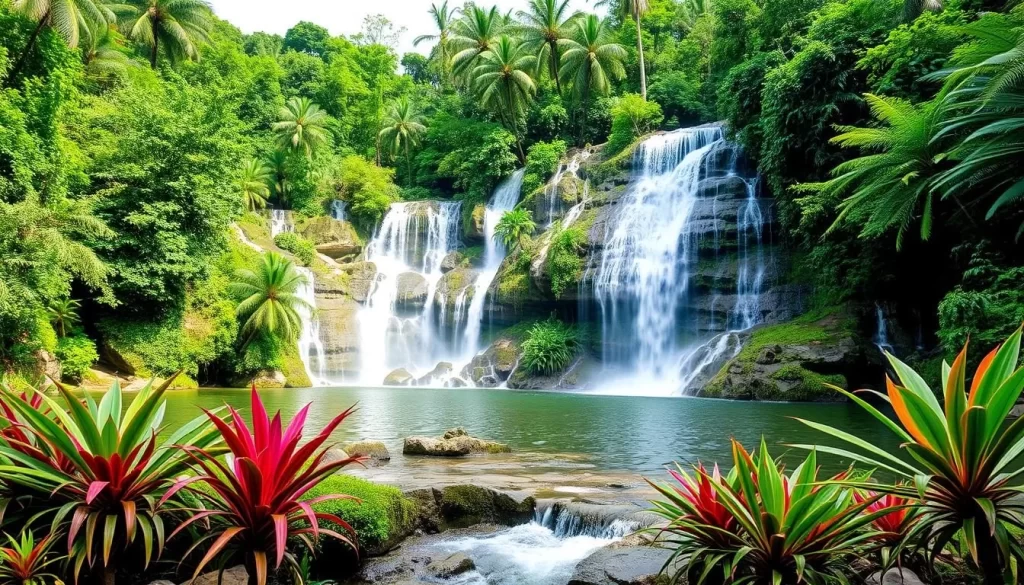
Khun Korn Waterfall stands as Chiang Rai’s tallest waterfall at an impressive 70 meters, creating a refreshing natural escape just 30 kilometers from the city center. The moderate 1.5-kilometer hiking trail to the waterfall takes you through lush jungle terrain and across charming bamboo bridges, offering an immersive nature experience suitable for most fitness levels.
The trail is an easy, well-maintained path that welcomes hikers of all ages, with signs marking the way. Along the hike, bamboo bridges add a picturesque touch to the route. The waterfall itself is a spectacle of nature’s power – its 70-meter drop creates a cool, misty breeze.
Hot Springs Experience
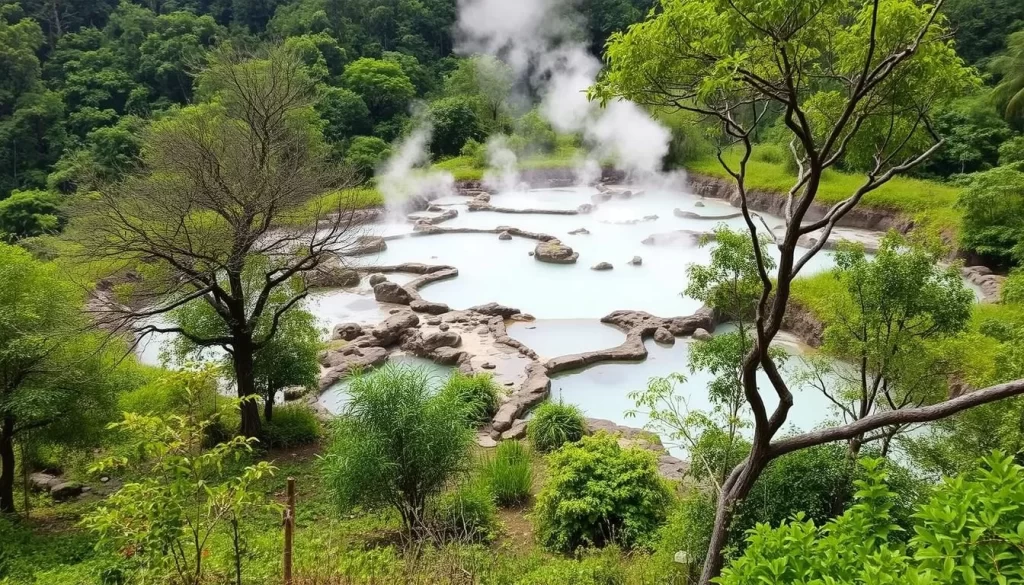
For a different natural experience, the Pong Phrabat Hot Springs provide therapeutic mineral waters with options ranging from free foot soaks to affordable private baths (50 THB). The hot springs complex offers various temperature pools, making it an ideal relaxation spot after hiking or temple-hopping, with the added benefit of an on-site massage center for complete rejuvenation.
Both Khun Korn Waterfall and Pong Phrabat Hot Springs showcase the diverse landscape around Chiang Rai, providing a perfect balance to the cultural and artistic experiences found at the city’s famous temples. Visitors can enjoy the peaceful setting and cool mist from the powerful cascade at Khun Korn, or unwind in the warm, therapeutic waters of the hot springs.
Tea Plantations: Scenic Beauty and Refreshment
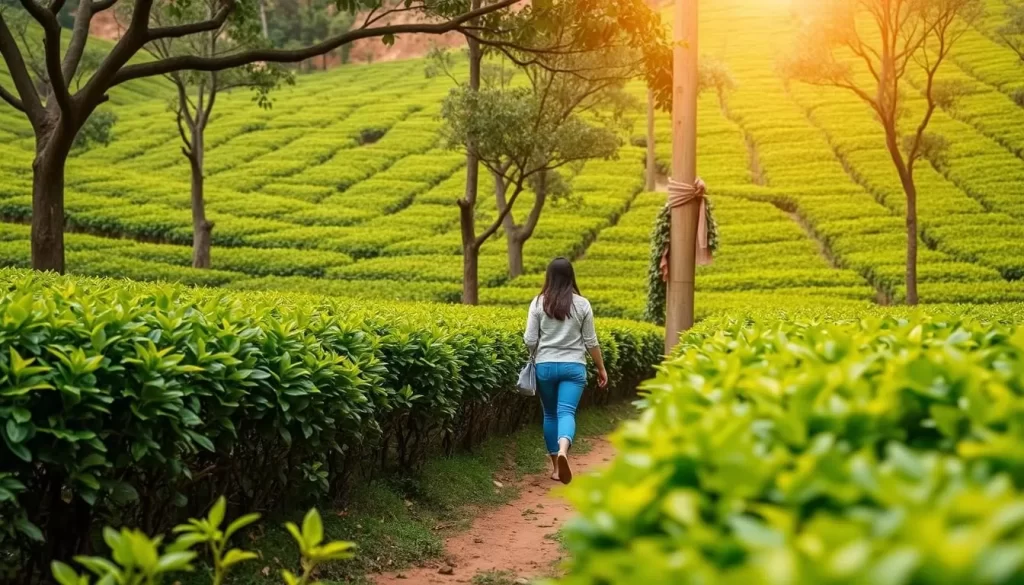
The rolling hills of Chiang Rai are home to some of Thailand’s most picturesque tea plantations. These plantations not only offer breathtaking views but also provide a refreshing escape from the hustle and bustle of city life. As you explore these serene landscapes, you’ll discover the beauty of tea cultivation and the tranquility it brings.
Choui Fong Tea Plantation
Choui Fong Tea Plantation is one of the most established tea producers in the region. Perched in the mountainous area near Chiang Rai, it has been producing high-quality teas for decades. Visitors can enjoy the panoramic views of the tea fields, sample freshly brewed tea, and purchase tea leaves from the gift shop. The modern café with its architecturally striking design offers a perfect vantage point to overlook the rolling landscapes.
101 Tea Plantation
For a more intimate experience, visit 101 Tea Plantation, which offers a less commercialized alternative to Choui Fong. The scenery here is equally breathtaking, with terraced fields of vibrant green tea plants against the backdrop of the mountains. It’s an ideal place to relax and enjoy the natural beauty of Chiang Rai. You can also sample and purchase high-quality teas grown on-site, making for a memorable experience.
Both Choui Fong and 101 Tea Plantations provide a unique experience, allowing visitors to immerse themselves in the natural beauty and cultural significance of tea cultivation in Chiang Rai. Whether you’re looking for scenic views, a relaxing atmosphere, or an educational experience, these tea plantations are a must-visit destination.
Chiang Rai, Thailand: Best Things to Do – Top Picks for Cultural Experiences
Immerse yourself in the cultural fabric of Chiang Rai, where history and tradition come alive. Chiang Rai offers a diverse array of cultural experiences that are sure to enrich your travel itinerary.
Hilltribe Museum
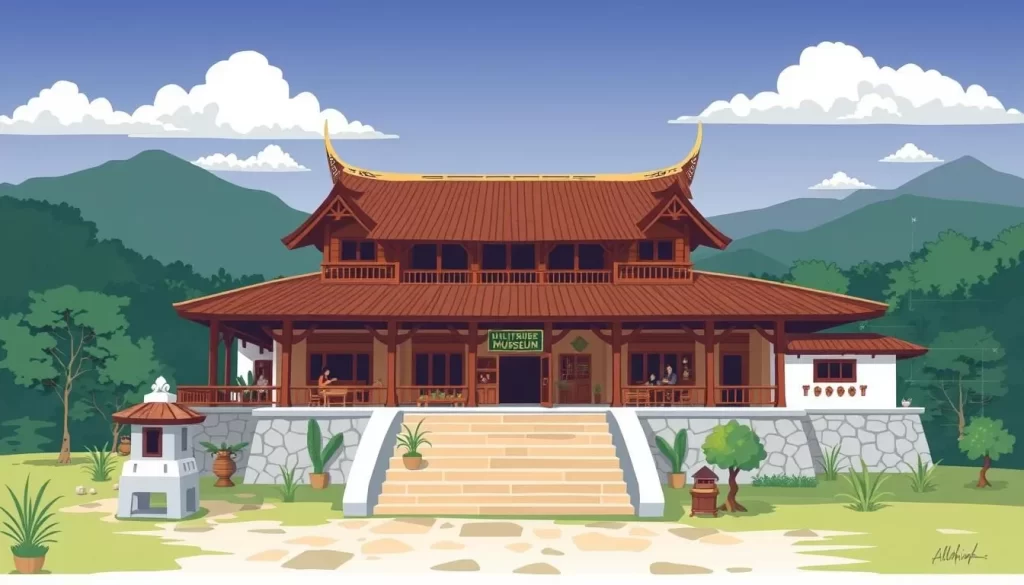
The Hilltribe Museum is a lesser-known attraction in Chiang Rai, but it’s an absolute must-visit for anyone interested in anthropology and the heritage of the ethnic minorities in Thailand. The museum features exhibits that provide insights into the daily lives, customs, and cultural practices of the hill tribes, including the Akha, Hmong, Karen, Lahu, Lisu, and Yao.
Through comprehensive exhibits of traditional costumes, tools, and artifacts, the museum documents the unique heritage of these hill tribes. It also provides valuable information about the challenges facing these communities today, including issues of citizenship, land rights, and cultural preservation.
Long-neck Village Visit
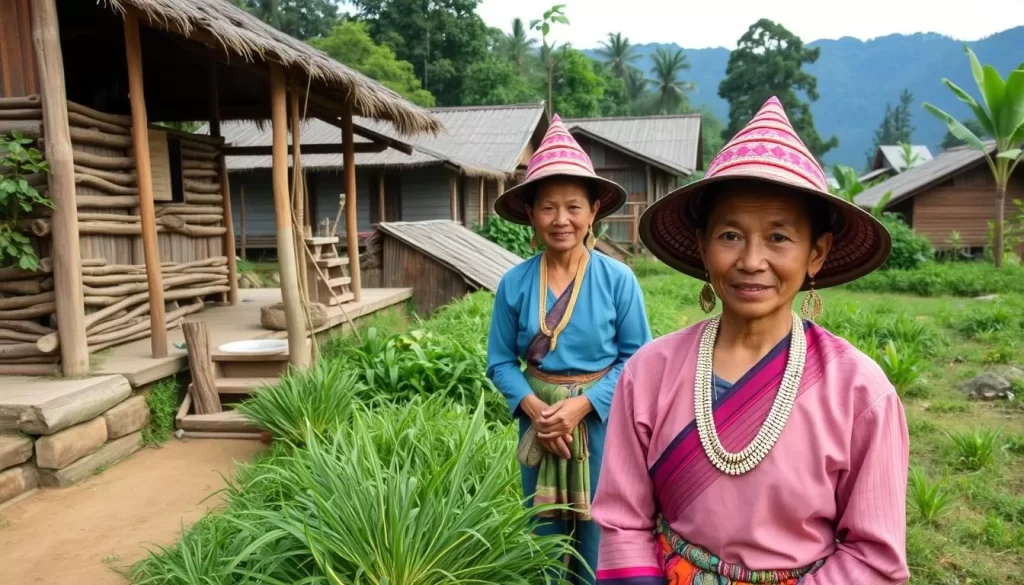
A visit to the Long-neck Village, home to the Kayan tribe, presents a complex ethical consideration for travelers. The village consists of refugees from Burma who rely heavily on tourism for their livelihood. For those who choose to visit, doing so with respectful curiosity and through responsible tour operators helps ensure the experience benefits the local communities.
These cultural experiences provide insight into the rich ethnic diversity of the Golden Triangle region, where Thailand’s borders meet Myanmar and Laos, creating a unique cultural landscape.
The Golden Triangle Experience
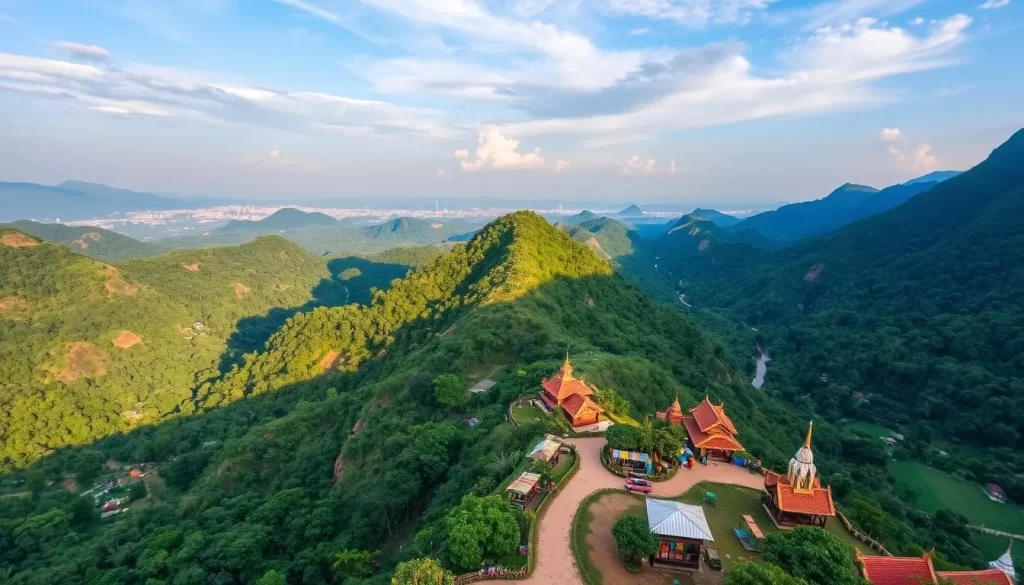
If you’re looking for a place that combines history, culture, and natural beauty, the Golden Triangle is the perfect destination. The Golden Triangle refers to the confluence of borders between three countries – Thailand, Laos, and Myanmar. It is here that the opium trade flourished during the 16th-17th centuries.
Where Three Countries Meet
This region marks the historic meeting point of Thailand, Laos, and Myanmar, offering visitors the unique experience of viewing three countries simultaneously from the Thai side of the Mekong River. The area is steeped in history, having been a major hub for the opium trade in the past.
Opium Museums
To learn about the devastating effects of opium and how the poppy plant changed world history, visit one of the two Opium Museums. The Hall of Opium, the bigger of the two museums, is open every day except Monday from 8:30 AM to 3:30 PM and costs THB 200. The smaller House of Opium is open every day from 7 AM to 7 PM for THB 50.
The Golden Triangle’s history is complex, having transformed from traditional medicinal use by hill tribes to international drug trade networks. The Hall of Opium Museum provides the most comprehensive educational experience about the region’s opium history, with interactive exhibits detailing the cultivation process, global impact, and efforts to combat drug trafficking.
Beyond the museums, you can enjoy boat trips on the Mekong River that provide views of all three countries, with some tours offering brief stops in Laos for an international dimension to your Chiang Rai experience. The area also features the Golden Buddha statue at Sop Ruak, creating a striking contrast between the region’s spiritual present and its complicated past.
Singha Park: Family-Friendly Adventure
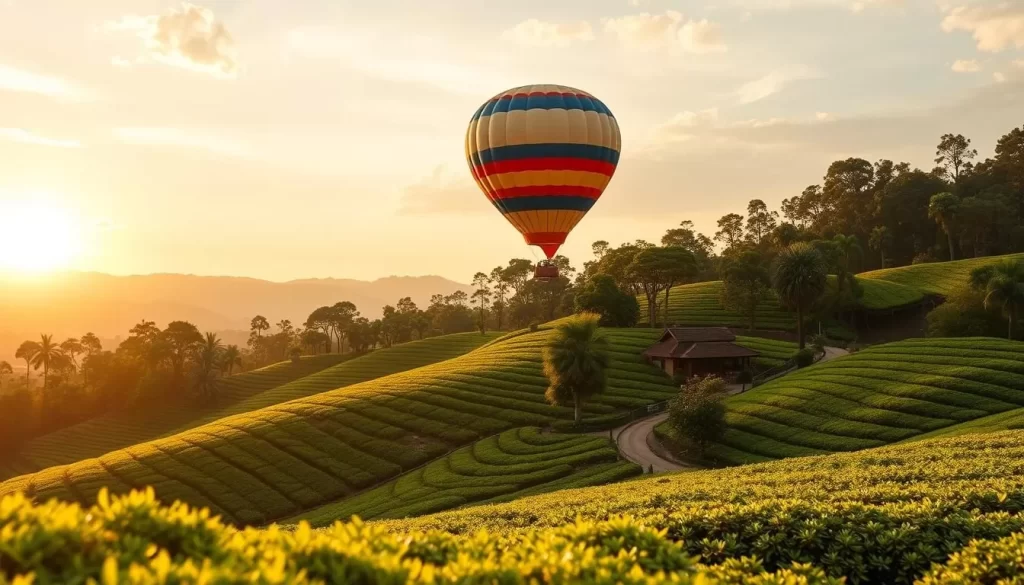
If you’re looking for a refreshing change from temple visits, Singha Park in Chiang Rai is the perfect place to explore. Located about 12 km southwest of Chiang Rai, this vast park offers a diverse range of activities suitable for family members of all ages.
Activities and Attractions
Singha Park is a 12.8 square kilometer agritourism destination that was once a barley farm used for Singha beer production. Today, visitors can enjoy a variety of experiences, including interacting with animals at the petting zoo, exploring the tea plantations, and participating in adventurous activities like zip-lining and rock climbing.
The park’s beautifully maintained grounds are home to a variety of flora and fauna, making it an ideal spot for nature lovers. You can rent bicycles or electric bikes to explore the vast grounds, or simply relax with a cup of their renowned oolong tea at the Tea House.
Seasonal Events
Throughout the year, Singha Park hosts various events, including the International Balloon Festival in February, music concerts, and cycling competitions. These events transform the park into a vibrant festival atmosphere, making each visit unique.
Whether you’re visiting Chiang Rai with your family or just looking for a new adventure, Singha Park is a must-visit destination that promises an unforgettable experience in Chiang Rai.
Local Markets and Food Experiences
Every night, the city center of Chiang Rai comes alive with the Night Bazaar, offering a unique blend of shopping, dining, and entertainment. This vibrant marketplace is where locals and tourists gather to experience the best of Chiang Rai’s culture and cuisine.
Chiang Rai Night Bazaar
The Chiang Rai Night Bazaar transforms the city center each evening into a lively spot where you can eat, shop, and chill out. You’ve got stalls upon stalls selling everything from souvenirs like T-shirts that shout “I’ve been to Thailand,” to intricate wood carvings, bracelets, bags, and more. The night bazaar’s main attraction is its food court surrounded by stalls. You can order food from any of the stalls and sit down in the seating area in the middle to enjoy your meal. The food court even has a stage where local musicians perform while you enjoy your dinner.
The Night Bazaar is known for its hot pot, served in a clay pot and heated over charcoal instead of gas, offering a rustic cooking method that enhances the flavors of the ingredients. Unlike larger and more touristy night markets in Chiang Mai, Chiang Rai’s Night Bazaar offers a more authentic experience with a focus on local crafts, northern Thai cuisine, and regional products.
Local Delicacies to Try
When visiting the Chiang Rai Night Bazaar, be sure to try some of the local delicacies. Don’t miss khao soi (curry noodle soup), nam ngiao (spicy tomato and pork soup), and sai oua (northern Thai sausage) – regional specialties that taste more authentic in Chiang Rai than in more touristy destinations. For a unique dining experience, try the traditional northern-style hot pot, which is a must-try when visiting the Night Bazaar.
Beyond food, the market offers locally-made handicrafts, textiles from hill tribes, and artwork that makes for meaningful souvenirs with cultural significance. The Night Bazaar is an experience that combines shopping, dining, and entertainment, making it a must-visit destination in Chiang Rai.
Unique Attractions in Chiang Rai
As you explore Chiang Rai, you’ll come across several unique attractions that highlight the city’s creative spirit and artistic vision. Two standout attractions that embody this spirit are the Chiang Rai Clock Tower and Lalitta Café.
The Clock Tower Light Show
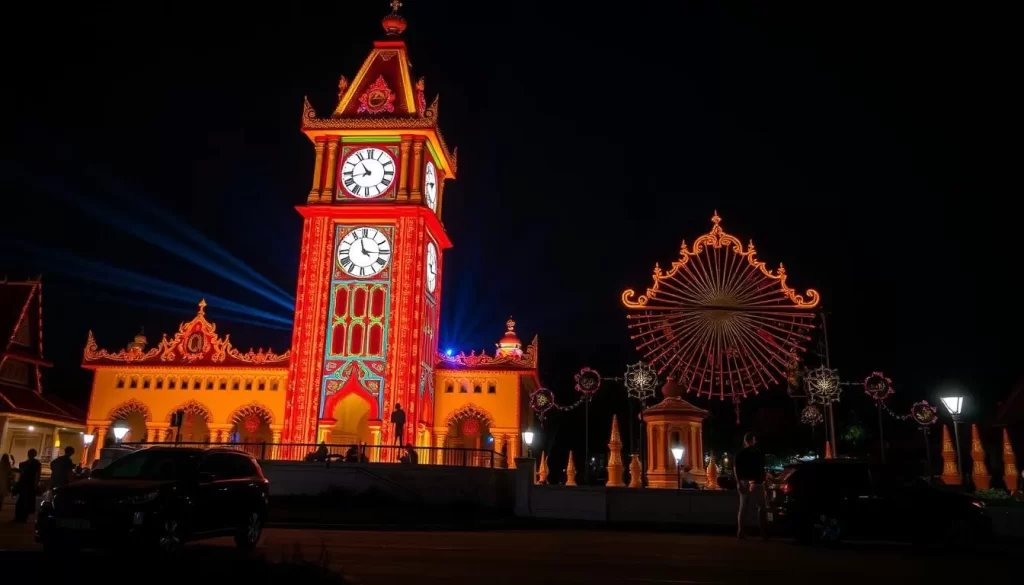
The Chiang Rai Clock Tower is a central landmark designed by Chalermchai Kositpipat, the same artist behind the White Temple. Built in 2008 to commemorate King Bhumibol Adulyadej’s 80th birthday, the clock tower features intricate carvings and decorations characteristic of Kositpipat’s style. Every night at 7:00 PM, 8:00 PM, and 9:00 PM, the clock tower comes alive with a spectacular light and music show.
The show illuminates the tower’s golden hue, creating a mesmerizing display that reflects Chiang Rai’s artistic vision. The clock tower’s roundabout location makes it an unavoidable landmark, serving as both a functional timepiece and an artistic statement.
Lalitta Café: A Fairytale Garden
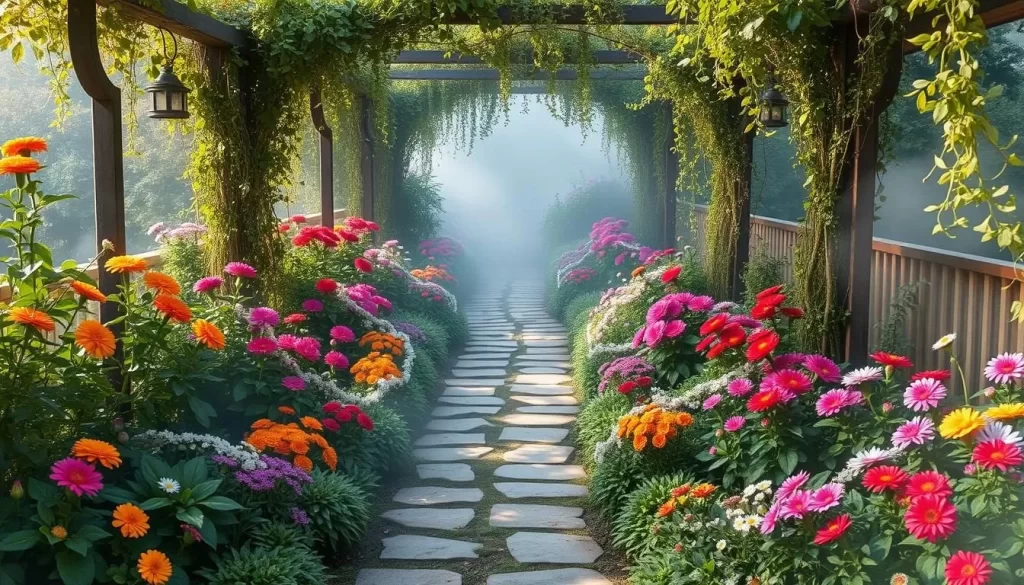
Lalitta Café offers a magical experience, transporting visitors into a fairytale garden. As you enter, you’re greeted by narrow alleyways covered in mist, with small streams creating a soothing ambiance and colorful flowers adding to the beauty. The café’s artificial rock waterfall and carefully designed landscape transform a simple coffee break into an immersive experience.
This enchanting setting showcases Chiang Rai’s attention to creating memorable spaces that go beyond typical tourist experiences, reflecting the city’s unique blend of artistic vision and creativity.
Day Trips from Chiang Rai
Chiang Rai serves as a great base for various day trips that showcase the region’s natural beauty and cultural diversity. Whether you’re interested in exploring rugged landscapes, experiencing local culture, or visiting significant landmarks, there’s a day trip from Chiang Rai that’s right for you.
Pu Chi Fa for Sunrise Views
Pu Chi Fa is a national forest park located around 120km from Chiang Rai, right on the Laos border. It’s a hidden gem almost untouched by tourism, making it a perfect destination for nature lovers. The park consists of four different peaks, with the main attraction being the Pu Chi Fa mountain peak at 1442m.
The area is particularly magical during sunrise when the valley is filled with mist, creating a breathtaking view. For the best experience, visit during the cool season (November-January) when clear skies provide optimal visibility.
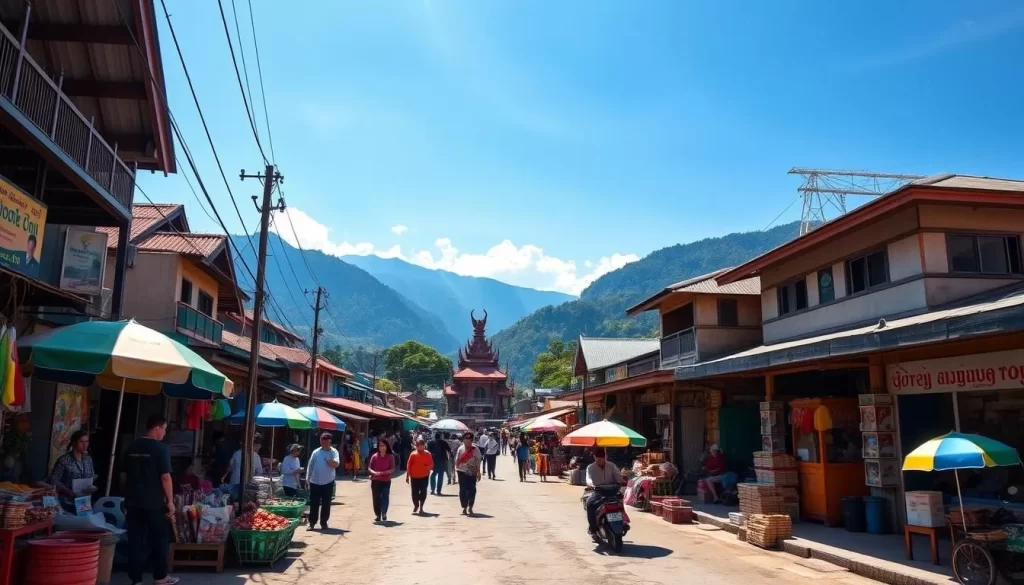
Mae Sai Border Town
Mae Sai is a border town that offers a fascinating glimpse into cross-border commerce and the unique cultural blend that exists in this frontier region. As Thailand’s northernmost point, it’s a busy border crossing to Myanmar. Visitors can shop for Burmese goods, jade, and other products at prices lower than elsewhere in Thailand.
These day trips from Chiang Rai showcase the geographic diversity surrounding the city, from mountainous viewpoints to international borders, adding depth to your northern Thailand experience beyond the city’s temples and attractions.
Conclusion: Making the Most of Your Chiang Rai Adventure
Discovering Chiang Rai is like uncovering a hidden gem, revealing a city that is full of surprises and delights. As you explore this enchantingplace, you’ll find that it offers a unique blend of cultural richness and natural beauty.
To make the most of yourtripto Chiang Rai, consider allocating at least two fulldaysto experience the city’s diverse attractions. Staying in thecitycenter is advisable for its convenience to the Night Bazaar and Clock Tower, while still being within easy reach of majortemples and attractions via motorbike or Grab services.
One of the advantages of visiting Chiang Rai is its affordable accommodations, offeringexceptional valuecompared to other Thai tourist destinations. You can choose from budget-friendly homestays or luxurious stays without straining your travel budget.
Balancing your itinerary between must-see attractions like the White, Blue, and Black House, and less-visited sites such as tea plantations and Singha Park, will provide a comprehensive understanding of the region. The relaxed pace of Chiang Rai allows for deeper cultural immersion and more meaningful interactions with locals, making yourexperienceeven more enriching.
Whether you’re visiting Chiang Rai as adaytrip from Chiang Mai or as a destination in its own right, you’ll find that it offers a perfect blend of artistic wonder, cultural richness, and natural beauty, capturing the essence of Northern Thailand. With sufficienttime, you’ll uncover the many facets of this captivatingcity, Chiang Rai.
The above is subject to change.
Check back often to TRAVEL.COM for the latest travel tips and deals.
Here are some Tours & Sightseeing suggestions that might pique your interests!
